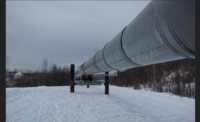NTSB: More weather info needed from pilots

Because they are in the best position to observe current weather conditions, pilots can help enhance aviation safety by providing weather updates – but few do, according to the National Transportation Safety Board (NTSB), which wants to change that.
In a just-issued Safety Alert, the NTSB warns that sparse reporting and inaccurate or incomplete information adversely affect the usefulness of PIREPs (brief reports from pilots describing observed in-flight weather conditions) for improving weather forecasts and advisories and helping pilots avoid weather hazards.
The reasons
Why do pilots submit relatively few PIREPS compared to overall air traffic volume?
The NTSB has some theories. Pilots may:
- be unaware that PIREPs of all weather conditions are important, including
- good or “as forecasted” weather
- lack confidence in their ability to assess weather
- not be proficient or comfortable with the various PIREP submission methods
- think that their PIREPs will not be disseminated to others.
Getting it right
When pilots do submit PIREPS, they often contain inaccurate or incomplete information. According to the NTSB, time or location errors in a PIREP greatly diminish its usefulness to pilots for strategic and tactical flight planning and to meteorologists for verifying forecasts or issuing advisories. Additionally, incomplete information or the use of nonstandard terminology or coding when reporting weather phenomena and intensity classifications significantly reduces a PIREP’s effectiveness because computers (and sometimes humans) cannot interpret the information. For example, such errors may prevent weather programs from automatically creating a graphical depiction of the PIREP.
Why it matters
Why is up-to-the-minute weather information important?
PIREPs play a vital role in improving the weather information used to support flight safety for all aircraft operations—small and large—to avoid inadvertent encounters with hazardous weather and prevent such accident. PIREPs are one of the most important sources of information that weather forecasters use to verify or amend aviation forecast and advisory products.
Historically, weather-related accidents involving general aviation aircraft that encountered poor visibility have a higher fatality rate than all other types of accidents, and accidents involving encounters with in-flight turbulence account for the most injuries to passengers and flight attendants on board US air carriers.
What can pilots do?
- Provide PIREPs when workload permits. Even late-reported PIPEPs (filed after landing) are valuable if the time and location of the weather phenomena are reported accurately.
- Report the time and location of the weather phenomena as precisely as possible.
- Use standard terminology and/or coding when reporting the type and intensity of weather phenomena. Refer to official Federal Aviation Administration (FAA) publications (links provided below) for guidance.
- Although you should be as complete and concise as possible when giving a verbal PIREP to an air traffic controller or flight service station specialist, don’t be deterred if you are unsure of the format. The person who receives your PIREP can request clarification if needed.
- Remember that PIREPs for null and light conditions, as well as conditions that are “as forecasted,” are as important as reports of hazardous or unexpected weather.
Looking for a reprint of this article?
From high-res PDFs to custom plaques, order your copy today!






